Article Contents:
- Why Keto Diets are Popular
- What is a Low Carb Diet
- Benefits of a Low Carb Diet
- Low Carb Diet Alternatives to Keto
- 10 Top Tips for Starting a Low Carb Diet
- Conclusion
- References and Citations
Let’s face facts, there are numerous ways to lose weight without keto. While the keto diet is gaining popularity for it’s weight loss benefits and the inherent health benefits it brings, it is not the only weight loss plan available. While there are many weight loss diets available the most effective diets are those focusing on long term dietary and lifestyle changes (good keto diets are included in this method). Diet plans and programs that educate you into weight loss through healthy eating – as a lifestyle, NOT just to lose weight for a special occasion. Assuming you have 1 of the 12 reasons to lose weight, here are the top alternatives to lose weight without keto.
Why Ketogenic Diets are Popular
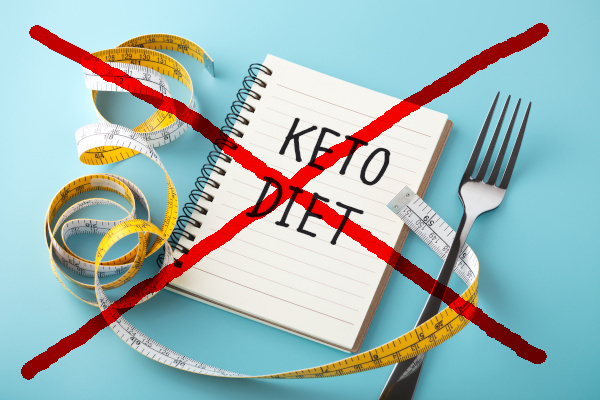
Ketogenic Diets are beneficial for weight loss. However, you can lose weight without keto. Low carb diets rich in proteins, fats and micronutrients will help you lose weight consistently while improving your overall health.
The ketogenic diet, or keto diet, is a high-fat, low-carbohydrate eating plan that has gained immense popularity over the last decade[2][3]. Here are some reasons why the keto diet has become so popular:
- Rapid weight loss: One of the main reasons people turn to the keto diet is for its ability to promote rapid weight loss[1]. When the body is deprived of carbohydrates, it enters a state of ketosis, where it burns fat for energy instead of glucose[6]. This can lead to significant weight loss in a short amount of time[2].
- Improved health markers: The keto diet has been shown to have positive effects on several health markers, including blood pressure, cholesterol levels, and blood sugar control[2]. It may also be beneficial for managing certain medical conditions, such as epilepsy, diabetes, and polycystic ovary syndrome[5].
- Increased satiety: The high-fat content of the keto diet can help increase feelings of fullness and satiety, which may lead to reduced calorie intake and weight loss[2].
- Flexibility: The keto diet can be adapted to fit a variety of dietary preferences, including vegetarian and vegan diets[2]. It also allows for a wide range of foods, including meats, fish, nuts, seeds, and low-carbohydrate vegetables[3].
While there are benefits of the keto diet, it is important to note that it may not be suitable for everyone[2]. It is a lifestyle diet requiring a minimal carb intake and can be difficult for some people to follow long-term. Additionally, it may lead to nutrient deficiencies if not properly balanced[5]. As with any diet, it is important to consult with a healthcare professional before making any significant changes to your eating habits.
What is the Downside of the Keto Diet?
The ketogenic diet, or keto diet, is a low-carbohydrate, high-fat diet that has gained popularity as a weight loss strategy[7][5]. While there are some benefits to the keto diet, such as weight loss and potential health benefits for controlling blood sugar and improving insulin sensitivity[7][8], there are also several drawbacks to consider[7][2][8][5][9][10]. Here is a brief overview of some of the drawbacks of the keto diet:
- Difficulty Maintaining: The keto diet is a strict diet and can be difficult to maintain as it requires a significant reduction in carbohydrate intake. Additionally the keto diet requires a significant increase in fat intake[6] which can go against the grain for many who have been indoctrinated into a low fat diet. This can make it challenging to stick to the diet long-term.
- Limited Food Choices: The keto diet restricts certain fresh fruits (high sugar content) and vegetables (high starch / carbohydrate) content, whole grains (high carbs), and other ‘relatively healthy foods that are typically recommended for good health[10]. This can make it difficult for some people to stick to and benefit from.
- Potential Health Risks: The keto diet can lead to several potential health risks, such as nutrient deficiencies, constipation, and kidney stones[7][5][10]. Additionally, the long-term effects of the keto diet are not well understood.
- Not Effective for Everyone: While the keto diet can be effective for weight loss in some people, it may not be effective for everyone[2][10]. Additionally, some studies have found that the keto diet is not more effective than other dietary approaches for weight loss[5].

Mango. Just one example of sweet and luscious beneficial micronutrient rich fruits that are heavily restricted on the keto diet. Others include peaches, nectarines, strawberries, grapes…
In summary, while the keto diet can be effective for weight loss and has some potential health benefits, it is important to consider the alternatives and potential drawbacks before starting the diet. You can lose weight without keto.
How you can Lose Weight without Keto
There are numerous alternatives to lose weight without keto. Simply by reducing your carbohydrate intake (especially the refined carbohydrates) and replacing the majority of your carb intake with more beneficial nutrients (fats, proteins and micronutrients) you will begin to lose weight naturally while also improving your overall health – healthy eating!
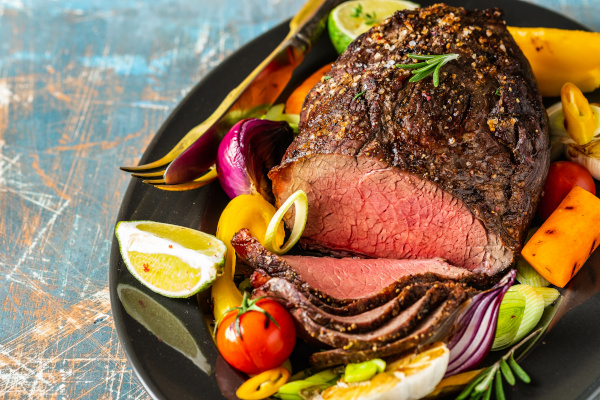
Healthy eating incorporates many more beneficial nutrients. Nutrients that increase satiety by actually providing the body with the nutrients it needs – fats, proteins, natural carbs and the all important micronutrients to fuel and support the various physiological systems within our bodies including digestive, immune, cardiovascular, brain and cognitive functions, skin condition….The list of health benefits goes on!

Roast dinners are not the only healthy eating option. A simple egg salad provides a mass of beneficial macro and micro nutrients that support ALL the physiological systems within our body yet contains very few carbohydrates AND calories.
The vast array of healthy eating meals would require a whole library of books from a variety of international cuisines and food preferences.
While scientists and health professionals will always argue between themselves there is growing science backed evidence that a low carb diet rich in essential fats, proteins and micronutrients is highly beneficial to weight loss and overall health.
What is a Low-carb Diet?
A low carb diet is a dietary approach that focuses on reducing the intake of carbohydrates, particularly those from refined and processed sources. Instead, it emphasizes the consumption of foods that are high in protein, healthy fats, and non-starchy vegetables.

Low Carb Diet meal. In addition to the 2 examples above low carb diets focus on eating satisfying meals with a reduced intake of carbohydrates (especially refined carbohydrates).
Here are some key points to understand about a low carb diet:
- Carbohydrate Restriction: The main principle of a low carb diet is to limit the consumption of carbohydrates, typically to around 50-100 grams per day. A Very low carb diet restricts the carbohydrate intake to between 20-50 grams/ day. This restriction aims to lower blood sugar levels and insulin production, leading to various health benefits.
- Increased Protein and Fat: To compensate for the reduced carbohydrate intake, a low carb diet encourages the consumption of protein-rich foods such as meat, fish, eggs, and dairy products. Healthy fats from sources like avocados, nuts, seeds, and oils are also emphasized.
- Food Choices: Foods that are typically included in a low carb diet include lean meats, fish, eggs, non-starchy vegetables, nuts, seeds, healthy oils, and some dairy products. Foods to avoid or limit include sugary foods, grains, starchy vegetables, and processed snacks.
How Low Carb Diets Work
A low carb diet works by restricting the intake of carbohydrates – carbohydrates are considered by many as the body’s main source of energy. When we consume food, it is broken down into it’s nutritional compounds. Carbohydrates are then converted to glucose and distributed throughout the body to the muscles fro immediate use as energy, the bones for strength and the remainder (your excess glucose) sent to the liver or distributed around the body and stored as fat for use at a later date.

Lose Weight without Keto – Low carb diets reduce the build up of excess carbs stored as fats – typically in the abdomen (belly fat)
Our inbuilt carbohydrate consumption systems works very well under normal healthy eating / active lifestyle conditions. Problems arise with the continuous consumption of excess carbohydrates which are stored as fat deposits around the body giving rise to cellular inflammation, obesity and the health problems that follow – including diabetes, cardiovascular disease and other heart conditions, inflammation of the joints, osteoporosis…….
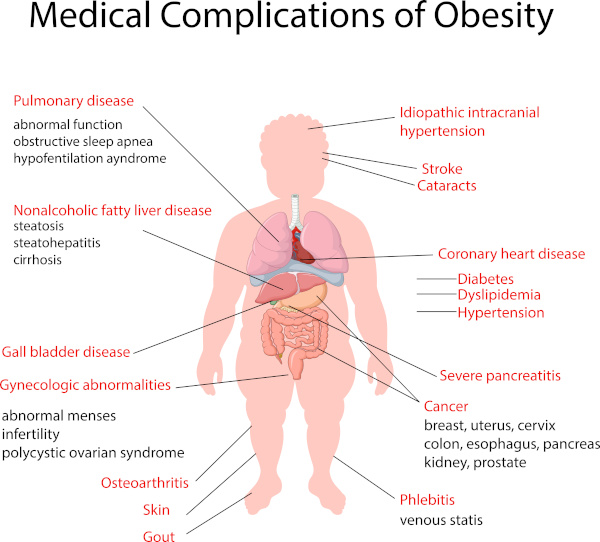
Low Carb Diets enriched with essential fats and micronutrients can reverse and cure many health problems associated with obesity including cardiovascular disease, T2 Diabetes, Pulmonary Disease, Hypertension, Severe Pancreatitis, Cancers, Osteoarthritis, Gynecological / Reproductive System Problems, None-Alcoholic Fatty Liver Disease and many others.
By reducing your daily carbohydrate intake, you body uses the fresh supply to provide energy for the muscles, electrolytes and to maintain bone strength. Reducing your daily carbohydrate intake encourages the body to turn to its reserve of energy – fat stored in the fat cells. Repeated reduced consumption forces the body to burn the excess fats as fuel. With a little help from a healthy intake of micronutrients (micronutrients that actively work to burn fat and increase energy levels) you can effectively turn your body into a fat burning machine.
Additionally, low carb diets may have other benefits, such as reducing insulin levels and improving cardiometabolic function[11]. Some studies suggest that low carb diets can increase satiety, reduce hunger, and overall food intake, leading to a caloric deficit and further promoting weight loss[11]. However, it’s important to note that the science behind low carb diets and weight loss is still inconclusive[12].
Benefits of a low-carb diet
A low-carb diet can be beneficial for weight loss, as well as for managing type 2 diabetes[13][14]. Here are some of the benefits of a low-carb diet:
- Weight loss: A low-carb diet can help you lose weight by reducing your overall carbohydrate intake. Reducing your total carb intake causes your body to burn stored fat for energy instead of relying on fresh intake of carbohydrates[14][15].
- Improved metabolic health: Low-carb diets have been shown to improve metabolic health markers, such as blood sugar levels, blood pressure, and cholesterol levels[14][15].
- Reduced hunger: A low-carb diet supplemented with increased fats, proteins and micronutrients can increase satiety to help reduce hunger and cravings. This simple modification to your diet can make it easier to stick to a healthier diet[16].
- Increased energy: Some people report feeling more energetic on a low-carb diet, as their body is burning stored fat for energy boosted by the increased intake of micronutrients which aid in generating energy inside the body instead of freshly consumed inflammation causing carbohydrates[17].
- Reduced Blood sugar levels – Reduced blood sugars reduce the need for increased insulin injections in Diabetics
- Increased Insulin Response
- Reduced Risk of Heart Disease. Obesity puts increased strain on the heart and cardiovascular system. Reducing the weight carried reduces the effort the heart and cardiovascular have to exert in order to fulfill its basic daily function.
Low-carb Diet Alternatives to Keto
In the ever-evolving world of dieting, low-carb options have garnered significant attention for their potential health benefits and weight management effects. Here, we explore five notable low-carb diet options, each with its unique approach: the Mediterranean diet, the Paleo diet, the Carnivore diet, the Atkins diet, the Dukan Diet, the OMAD (One Meal a Day) Diet, and the Smoothie Diet.
The Mediterranean Diet:

Inspired by traditional dietary patterns of countries bordering the Mediterranean Sea, this diet focuses on whole foods like fruits, vegetables, nuts, seeds, legumes, fish, and olive oil.
While not strictly low-carb, it is naturally lower in refined carbs and added sugars, emphasizing complex carbohydrates instead. The Mediterranean diet has been associated with various health benefits, including improved heart health and reduced risk of chronic diseases
The Paleo Diet

Drawing inspiration from the diets of our Paleolithic ancestors, this approach promotes whole, unprocessed foods like lean meats, fish, fruits, vegetables, nuts, and seeds while excluding grains, legumes, and processed foods. Though not entirely carb-restrictive, it often results in reduced carb consumption due to its exclusion of modern-day carbohydrate sources. The Paleo diet focuses on nutrient-dense foods and can aid in weight loss and improved blood sugar regulation.
The Carnivore Diet
Among the most restrictive low-carb options, this diet revolves around consuming animal products exclusively, such as meat, fish,
eggs, and certain dairy products. It eliminates plant-based foods, including carbohydrates, in favor of an all-animal product approach. While the Carnivore diet may lead to initial weight loss and potential relief from certain health issues, its long-term sustainability and potential nutrient deficiencies remain areas of concern.
The Atkins Diet
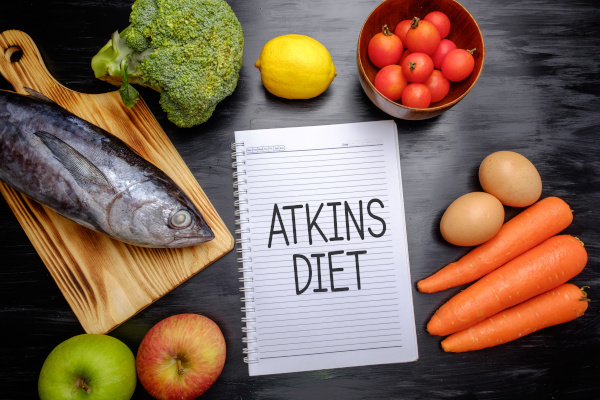
The Atkins diet is a well-known low-carb approach that emphasizes high protein and fat intake while gradually increasing carbohydrate
intake through different phases. It starts with an extremely low-carb induction phase, aiming to shift the body into a fat-burning state. As the phases progress, more carb-containing foods are reintroduced. The Atkins diet may be effective for weight loss and improving metabolic markers, but it requires careful monitoring to ensure balanced nutrient intake.
The Dukan Diet
Originating in France, the Dukan Diet is a multi-phase, high-protein, and low-carb diet. It starts with an initial strict
protein-only phase, followed by alternating protein and vegetable phases, and finally, a maintenance phase. While it can lead to rapid weight loss, critics argue that its restrictive nature and potential nutrient imbalances might be unsustainable in the long run.
The OMAD (One Meal a Day) Diet
As the name suggests, this diet involves consuming all daily calories within a single mealtime, typically within a one-hour window. While not inherently low-carb, many OMAD practitioners choose to reduce carb intake to aid in weight loss and better manage hunger throughout the fasting period. However, it can be challenging to meet all nutritional needs within a single meal, making careful food choices essential.
As a busy father and carer to my now disabled T1 diabetic partner, I have been ‘forced’ to reduce my meal frequencies – occasionally down to one meal a day (OMAD). It is a very restrictive and exhausting way to live. OMAD is effectively, an exhausting form of intermittent fasting. Intermittent fasting is essentially where you eat at specific times allowing 15-18 hrs between meal times – normally fasting overnight until mid afternoon the following day. During the allocated eating time you can consume a variety of different meals to fuel up on the essential and varied nutrition your body needs. ‘I.F’ can stimulate the body into burning stored fats. After approx 15 hrs fasting the body should initiate a release of fats from the fat cells and liver (in the form of ketones) to provide energy to the brain and muscles for survival – the basic principle of keto diet.
The Smoothie Diet

The Smoothie Diet was created by Drew Sgoutas, a Board Certified Health Coach and Nutrition Expert.
The plan is simple. For 21 days, you swap out two of your three meals with delicious, hearty, nutrient-dense smoothies. You can still have snacks and one whole food based meal throughout the day, and you won’t have to stress about planning them – the Smoothie Diet guide includes sample meals and snacks (plus vegetarian options)
The carb intake on the Smoothie Diet depends on the ingredients used in the smoothies, but it can be designed to be low-carb.
This low-carb approach revolves around replacing one or more meals with nutrient-dense, low-calorie smoothies. While it can help
control calorie intake and increase nutrient consumption, it is crucial to create well-balanced smoothies to avoid potential nutrient deficiencies.
When considering any low-carb diet, it is vital to remember that individual responses may vary, and consulting with a healthcare professional or registered dietitian is recommended before making significant dietary changes. While these low-carb options can be effective for weight loss and improving certain health markers, finding a sustainable and personalized approach that meets one’s nutritional requirements remains key to long-term success.
How these Diets Compare to the Keto Diet for Carbohydrate Restriction and Weight Loss Potential
Among the various low-carb diet options mentioned earlier, the ketogenic (keto) diet stands out due to its unique approach to carb intake and weight loss potential. Let’s compare the keto diet to the Mediterranean diet, the Paleo diet, the Carnivore diet, the Atkins diet, the Dukan Diet, the OMAD (One Meal a Day) Diet, and the Smoothie Diet in terms of their carb restrictions and weight loss effects.
Carb Intake
Carbohydrate intake varies depending upon the actual dietary protocol and how closely you can follow that diet. Sugar is probably the most difficult carbohydrate for most of us to stop due to its addictive nature and the fact that food manufacturers use it in as many food products as they can to keep you “addicted” to consuming their produce.
The Keto Diet

The keto diet is an ultra-low-carb diet, typically restricting carb intake to around 20-50 grams per day, aiming to induce a state of ketosis. In ketosis, the body primarily uses fats for energy instead of carbs, leading to more significant fat burning and weight loss.
While many keto diets are pre-defined in food and meal options, the Custom Keto Diet is personalised to your food preferences and lifestyle. A Personalised Diet Plan
Mediterranean Diet
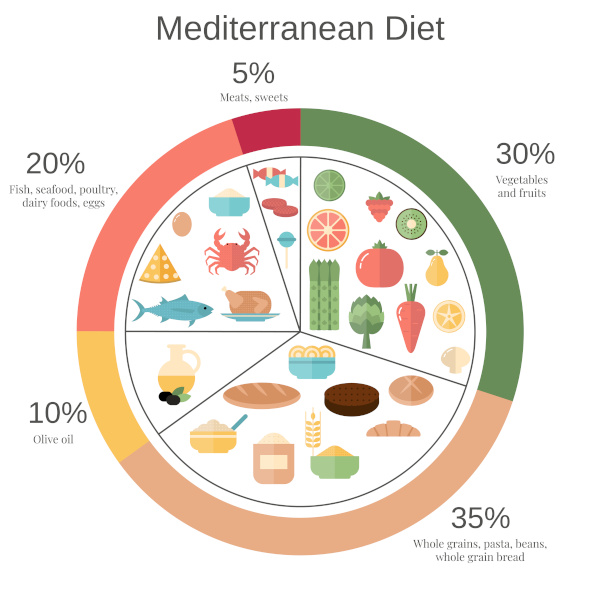
While the Mediterranean diet is not strictly low-carb, it naturally reduces carb intake by focusing on whole foods and complex carbohydrates, emphasizing fruits, vegetables, and whole grains over refined carbs and added sugars.
You will notice from the infographic that wheat based products comprise approx 35% of the Meditteranean Diet. Wheat based products not only contribute to the excess carb intake, they cause inflammation – another cause of obesity.
Paleo Diet
The Paleo diet encourages lower carb consumption due to its exclusion of grains and legumes, but it still permits some carb intake from fruits, vegetables, and nuts.
In the quest for a healthier lifestyle and sustainable weight loss, the Paleo diet has emerged as a popular choice. Rooted in the dietary habits of our Paleolithic ancestors, this eating regimen focuses on whole, unprocessed foods, mirroring the foods available before the advent of agriculture. The Paleo diet emphasizes lean proteins, fresh fruits and vegetables, healthy fats, and excludes grains, dairy, and processed foods.
The core principle behind the Paleo diet is that by consuming nutrient-dense, natural foods, our bodies can function optimally and shed excess weight. The diet’s high protein content aids in satiety and supports muscle growth, potentially increasing the metabolic rate. Moreover, cutting out grains and refined sugars helps stabilize blood sugar levels, preventing energy crashes and cravings.
By focusing on real, wholesome foods, the Paleo diet naturally reduces calorie intake and encourages mindful eating. The absence of processed foods eliminates hidden additives and excess sodium, contributing to reduced bloating and water retention.
However, it’s essential to approach the Paleo diet with a balanced perspective. Critics argue that the strict elimination of entire food groups might lead to nutrient deficiencies, particularly calcium and vitamin D due to the exclusion of dairy.
The Paleo diet offers a back-to-basics approach to weight loss by promoting the consumption of whole, unprocessed foods. Its emphasis on protein, healthy fats, and nutrient-dense options can contribute to increased satiety and stable energy levels, potentially aiding in the loss of excess weight. While the diet’s exclusion of certain food groups may raise concerns, proper planning and consultation with a healthcare provider can help individuals navigate the Paleo journey safely and effectively.
Carnivore Diet
The carnivore diet, an unconventional approach to eating, has garnered attention for its exclusive reliance on animal products. Advocates of this diet believe that consuming only meat, fish, and animal-derived products can lead to various health benefits, including weight loss. While it starkly contrasts with traditional dietary norms, proponents argue that certain basic and essential nutrients can be sourced from within the meat itself.
Meat is a rich source of complete proteins, providing all the essential amino acids our bodies require. Additionally, it’s abundant in crucial vitamins and minerals such as B vitamins (B12, riboflavin, niacin) and minerals like iron and zinc. These nutrients are vital for energy production, immune function, and overall well-being. Further to this, my own research has revealed some interesting facts about the nutritional content within meats – and esp red meat. Science has shown that red meats include a higher quantity of bio available nutrients compared to white meats (fish, chicken, pork etc.) Further into the studies revealed that offal from red meat (esp grass fed beef liver) contains higher amounts of a wider variety of essential nutrients than the steak cuts of red meat. This may be due to the fact that cattle have 4 stomachs for digesting vegetation leaning to potential removal of antinutrients and the inflammatory effects of oxalates within certain greens.
Eliminating plant-based foods can potentially reduce the intake of anti-nutrients found in some vegetables and grains, which could improve digestion and nutrient absorption. Furthermore, some individuals report reduced inflammation and improved digestion when adhering to a carnivore diet, though scientific consensus on these effects is still evolving.
However, the carnivore diet’s extreme nature raises concerns about potential nutrient deficiencies, specifically in fiber, vitamins C and E, and certain phytonutrients found in plant foods. Long-term sustainability and potential health risks are subjects of ongoing debate among experts.
In summary, the carnivore diet’s exclusive focus on animal-derived products aims to tap into essential nutrients present within meat, offering a unique perspective on nutrition and health. While some benefits are noted, the diet’s potential limitations and risks highlight the importance of individualized dietary choices and consulting with healthcare professionals before embarking on such a restrictive eating regimen.
Atkins Diet
The Atkins diet follows a phased approach, with initial strict carb restriction during the induction phase, but gradually increases carb intake in later phases.

The Atkins Diet, synonymous with low-carb weight loss, prioritizes natural weight reduction through carbohydrate restriction.
It involves four phases: Induction, Balancing, Pre-Maintenance, and Maintenance.
By significantly reducing carbs, the body enters ketosis, burning stored fat for energy. High intake of proteins and fats keeps hunger at bay while promoting fat loss. The diet encourages whole, unprocessed foods and limits refined sugars. While effective for short-term weight loss, potential drawbacks include nutrient deficiencies and sustainability concerns.
Dukan Diet : A High-Protein Path to Weight Loss Success
The Dukan Diet is a phased approach with varying levels of carb restriction during its different stages. Crafted by French physician Dr. Pierre Dukan, The Dukan Diet has gained popularity as a structured weight loss plan centered around high-protein consumption. Divided into four phases – Attack, Cruise, Consolidation, and Stabilization – the diet aims to kickstart weight loss while promoting long-term results.
The initial “Attack” phase jumpstarts metabolism by focusing on lean protein sources and minimizing carbohydrates. In the “Cruise” phase, non-starchy vegetables are gradually reintroduced alongside protein, offering variety. The “Consolidation” phase includes controlled reintroduction of certain foods and aims to prevent rebound weight gain. Finally, the “Stabilization” phase establishes lifelong habits to maintain weight loss.
The Dukan Diet’s reliance on protein is intended to promote satiety and spare muscle mass during weight loss. While some people find success with its structured approach, critics highlight potential nutrient imbalances and the exclusion of certain food groups. Before embarking on the Dukan Diet, consulting with a healthcare professional is advised to ensure safety and individual suitability.
The Dukan Diet is also a phased approach with varying levels of carb restriction during its different stages.
OMAD Diet
The OMAD (One Meal A Day) diet is a fasting approach gaining traction for weight management and potential health benefits. With OMAD, individuals consume all their daily caloric intake within a single meal, fasting for the remaining hours. This pattern aims to induce a caloric deficit, promoting weight loss. While the OMAD Diet doesn’t inherently prescribe a specific carb limit, many practitioners choose to reduce carb intake to support weight loss during the fasting period.
Advocates praise its simplicity and flexibility, allowing for regular meals without strict food restrictions. OMAD may enhance insulin sensitivity and cellular repair due to prolonged fasting periods, potentially yielding health gains beyond weight loss.
However, the OMAD diet may pose challenges, including potential nutrient deficiencies and overeating during the designated meal.
It might not suit everyone, especially those with specific medical conditions. Consulting a healthcare professional before embarking
on OMAD is crucial, ensuring safety, individual suitability, and balanced nutrition while harnessing its benefits for weight loss
and overall well-being. As a busy carer to my disabled partner, father to a growing 7 year old daughter, performing all the household chores, researching and creating content for this website and running the site, I have been living (occassionally) on this type of diet / eating style. The problems with trying to exist on One Meal a Day is the sheer concentration of HAVING to cram in as much nutrition as possible to avoid the side effects (malnutrition) and digestive issues.
Smoothie Diet:

The carb intake on the Smoothie Diet depends on the ingredients used in the smoothies, but it can be designed to be low-carb.
Weight Loss Potential:
Keto Diet
Due to its extreme carb restriction and promotion of ketosis, the keto diet is known for its significant weight loss potential. Ketosis leads to increased fat burning, making it an effective choice for rapid and sustained weight loss for many individuals.
While the other low-carb diets mentioned can also facilitate weight loss, their effectiveness may vary depending on individual preferences, adherence, and metabolic responses. They may offer slower weight loss rates compared to the keto diet.
How to Lose Weight without Keto: Other Low-Carb Diets
In conclusion, the keto diet stands out for its unparalleled carb restriction and impressive weight loss potential due to its ability to induce ketosis. On the topic of keto diets, the custom keto diet differentiates itself from mainstream keto diets – the custom keto diet is a personalised diet customised to your personal food preferences and lifestyle.
Other low-carb diets like the Mediterranean diet, Paleo diet, Carnivore diet, Atkins diet, Dukan Diet, OMAD Diet, and Smoothie Diet also offer various health benefits and can promote weight loss, but their carb restrictions are generally less extreme than the keto diet. The best diet for an individual depends on their specific health goals, preferences, and ability to sustain the chosen dietary approach over time. Before embarking on any significant dietary change, it is essential to consult with a healthcare professional or registered dietitian to ensure it aligns with individual needs and overall health
10 TOP Tips for Starting a Low-carb Diet
Transitioning to a low-carb diet can be a significant step towards successful weight loss and improved health. Here are the top tips to make the transition as smooth and effective as possible:
- Gradual Reduction: Avoid sudden and drastic carb elimination. Gradually reduce your carb intake over a few days or weeks to allow your body to adjust without feeling overwhelmed. Sudden and drastic carb reduction can lead to dizziness and is also referred to as Keto Flu
- Focus on Whole Foods: Prioritize whole, nutrient-dense foods like vegetables, fruits (in moderation), lean proteins, nuts, and seeds. These foods provide
essential nutrients while naturally reducing carb intake. - Plan Meals and Snacks: Plan your low-carb meals and snacks in advance to avoid impulsive, carb-heavy choices. Include a balance of protein, healthy fats,
and non-starchy vegetables in each meal. - Stay Hydrated: Drink plenty of water throughout the day to stay hydrated and help control hunger cravings, which may be heightened during the transition.
- Monitor Carb Intake: Pay attention to nutritional labels and track your carb intake initially to get a better understanding of the carb content in different
foods. - Substitute Carbs: Find low-carb alternatives for your favorite carb-rich foods. For example, use cauliflower rice instead of regular rice or lettuce wraps
instead of tortillas. - Prepare for Side Effects: Be aware that some people may experience initial side effects, often referred to as the “keto flu,” such as fatigue, headaches,
and irritability. These usually subside within a few days. - Seek Support: Join online communities or seek support from friends and family who have experience with low-carb diets. Having a support system can make the transition easier.
- Avoid Hidden Carbs: Be mindful of hidden carbs in sauces, condiments, and processed foods. Read labels carefully and choose low-carb alternatives.
- Be Flexible: There’s no one-size-fits-all approach to low-carb diets. Find what works best for you and be willing to make adjustments as needed.
Remember that each person’s body and needs are unique, so it’s essential to listen to your body, be patient with the transition process, and consult with a healthcare professional or registered dietitian if you have any health concerns or medical conditions. With dedication and perseverance, transitioning to a low-carb diet can lead to successful weight loss and improved overall well-being.
Conclusion
Research has shown that low-carb diets offer several benefits for weight loss and overall health. By reducing carb intake, these diets help stabilize blood sugar levels, enhance insulin sensitivity, and promote a shift towards burning stored fat for energy. This can lead to significant weight loss and improvements in body composition.
Additionally, low-carb diets often result in reduced hunger and increased satiety, aiding in calorie control. Furthermore, they have been associated with improvements in cardiovascular risk factors, such as reducing triglycerides and increasing HDL cholesterol levels. Overall, a low-carb diet can be an effective and sustainable approach for weight loss and supporting metabolic health.
As an alternative to the diets listed above, and still want to lose weight without keto, there is one “understated weight loss protocol” that teaches you how to lose weight naturally and reveals the true secrets to weight loss for both men and women…..
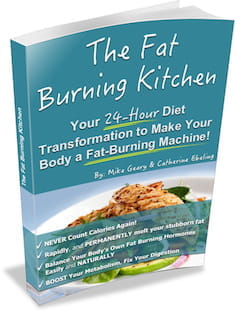
The Fat Burning Kitchen
The Fat Burning Kitchen reveals many secrets to burning fat through healthy eating. Created by Fat Loss expert Mike Geary, teh Fat Burning Kitchen reveals ALL the dietary advice you need to learn not only how to lose weight but turn your body into a 24/7 fat burning machine.
- No More Calorie Counting
- Discover Which Fats You Need and Bad Fats to Avoid
- Everyday “Kitchen Staples” that are Killing you Slowly!
- The Most Effective Fat Burning Exercises to Burn Fat Fast at Home in Less Time and Without Expensive Equipment.
References and Citations
- National Library of Medicine / Ketogenic Diet
- Advantages and Disadvantages of the Ketogenic Diet: A Review Article
- EverydayHealth / Ketogenic Diet
- Journal of Nutrition : The Ketogenic Diet: Evidence for Optimism but High-Quality Research Needed
- HSPH Harvard / Ketogenic Diet
- Medical News Today
- Healthbeat : Pros and Cons of the Keto Diet
- The Portland Clinic : The Keto Diet Pros Cons and Tips
- EverydayHealth : Keto Diet Downsides May Outweigh Benefits
- University of Chicago Medicine : Ketogenic Diet – What are the Risks
- National Library of Medicine / Low Carbohydrate Diet
- Discover Magazine : How Do Low Carb Diets Work for Weight Loss?
- National Library of Medicine : Optimal Diet Strategies for Weight Loss and Weight Loss Maintenance
- DietDoctor / A keto diet for beginners
- Nature.com / Ketogenic diet for human diseases: the underlying mechanisms and potential for clinical implementations
- MDPI Diabetology : Beneficial Effects of the Ketogenic Diet in Metabolic Syndrome: A Systematic Review
- Dummies.com / What is a Keto Diet?
